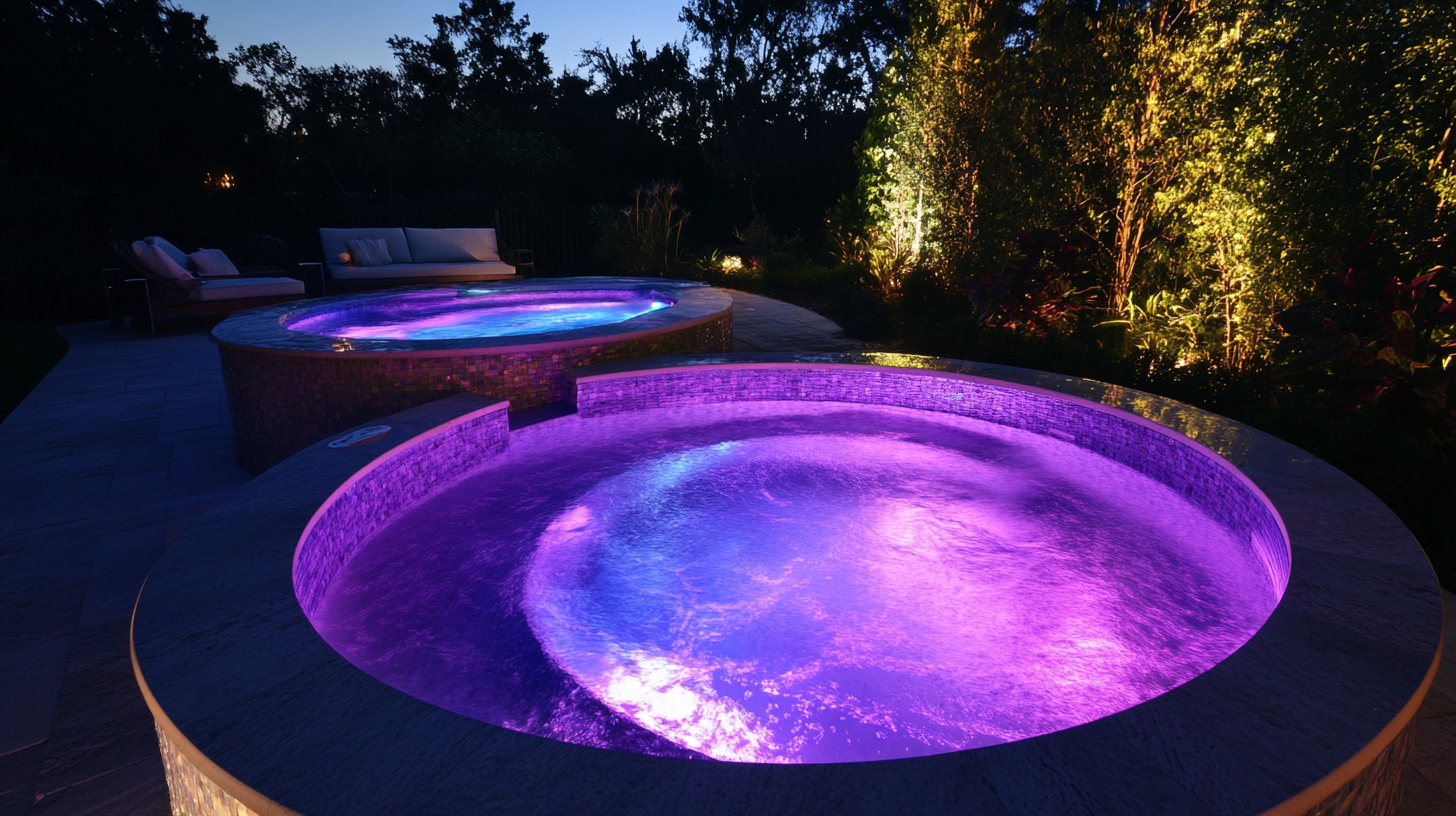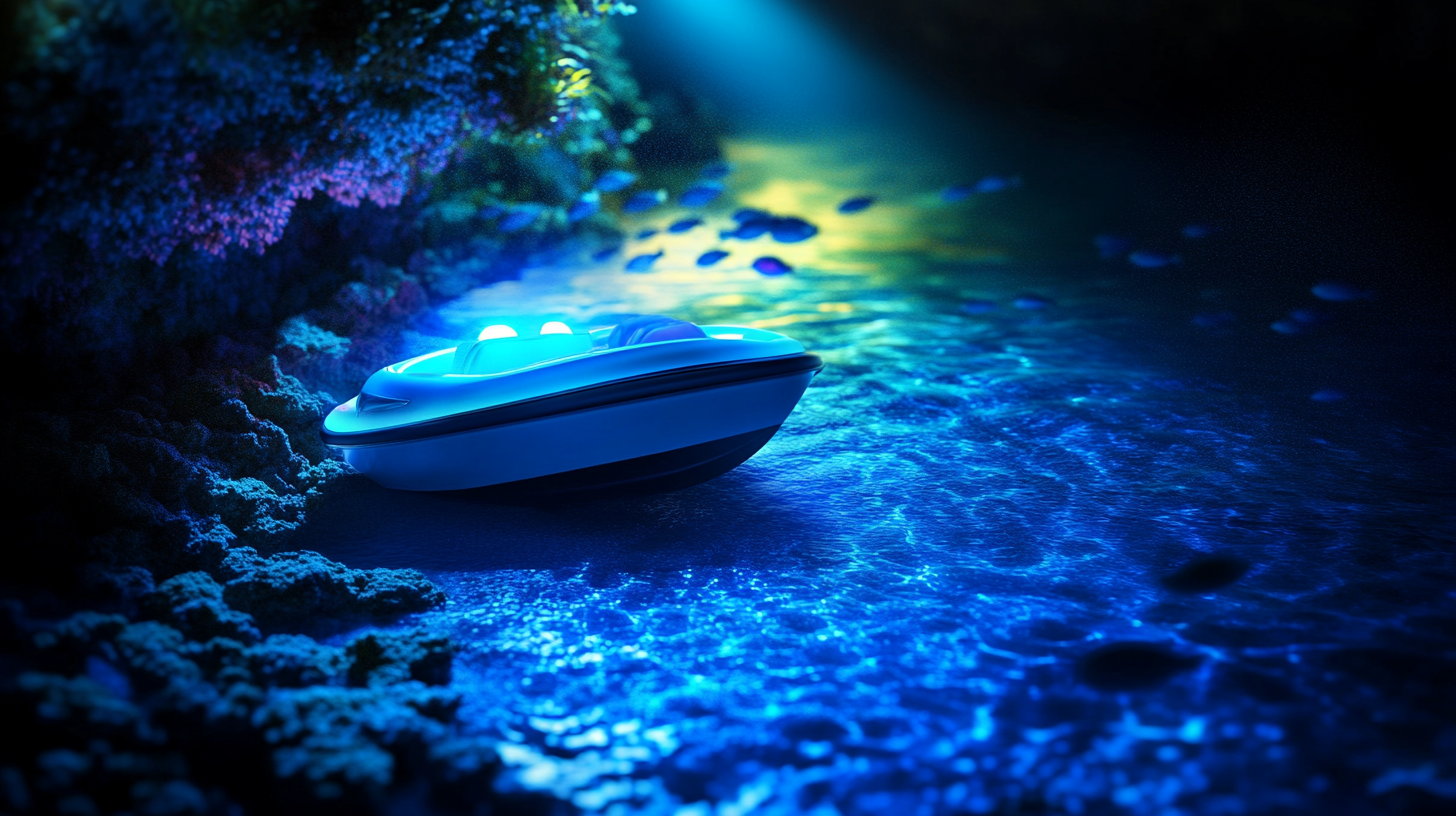Differences between in-ground and above-ground underwater pool lights
When diving into the world of underwater pool lights, it’s essential to understand the subtle yet significant differences between the types available. A key consideration is whether you need lighting for an in-ground or an above-ground pool since each type offers distinct features tailored to their unique environments. Typically, you’ll come across three main categories: halogen, LED, and fiber optic pool lights.
Halogen pool lights have been a staple in pool illumination for years. Known for their warm, inviting glow, they have long been the go-to for both in-ground and above-ground installations. However, halogen lights tend to have a shorter lifespan and consume more energy than their modern peers. They also generate more heat, which can be a concern in certain installations.
On the other hand, LED pool lights are the new darlings of pool illumination thanks to their energy efficiency and long lifespan. They offer a dazzling array of color options and can be easily controlled via smart home systems to create just the right mood for any occasion. Their versatility and modern appeal make them a popular choice for both in-ground pools with elaborate aesthetics and above-ground options that require reliable performance.
Then there are fiber optic pool lights, which are primarily used for decorative purposes. These systems feature a light source located remotely, with the light channeled through fiber optic cables into the pool area. This setup minimizes electricity near the water, enhancing safety. Although installation can be a tad more involved and potentially pricier, the ability to create intricate lighting designs is unmatched.
Understanding these types and their differences helps ensure you select the right lighting to enhance your pool’s ambiance while aligning with practical requirements. Whether revamping an in-ground oasis or sprucing up an above-ground retreat, choosing the appropriate pool lights can transform your nighttime swimming experiences into something truly magical.
installation considerations
When it comes to installing underwater pool lights, the process can differ significantly between in-ground and above-ground pools. It’s not just about cement and water; it’s a dance of technicalities and creative decisions. For in-ground pool lights, the adventure often begins with the construction phase. These lights are typically integrated into the pool’s design, requiring precise placement within the pool walls or floor. It’s a meticulous task that involves cutting niches into the pool shell before applying the shell’s final finish. The fixture housings are then sealed to prevent water leaks, a step that requires skill and precision to ensure long-lasting functionality.
On the flip side, above-ground pool lights offer a simpler installation narrative. These are generally designed to be easily mounted on the pool walls or hung over the edges. Many are plug-and-play, requiring minimal tools and little technical expertise. This makes them an attractive option for those seeking a DIY approach. However, attention to detail remains crucial as securing the lights properly ensures they stay in place during water movement or when the pool is in use.
Electrical considerations are paramount regardless of the type of pool. For both in-ground and above-ground pools, safety concerns dictate the need for underwater lights to be connected to a ground fault circuit interrupter (GFCI) to prevent any electrical mishaps. This is where the expertise of a licensed electrician becomes invaluable, ensuring connections meet all safety standards.
Cable management is another aspect that mustn’t be overlooked. In-ground installations require careful planning to conceal and protect cables within the pool structure, whereas above-ground setups often involve cable routing along the pool edge or through slick, unobtrusive conduits. Ensuring a safe and aesthetic finish means keeping cables out of sight yet accessible should maintenance be necessary.
Regardless of whether you’re illuminating an in-ground masterpiece or an above-ground retreat, the differences in installation considerations are crucial. Thoughtful planning and execution can make the difference between a dazzling night swim and an electrical turmoil. Keep your pool light project a beacon of enjoyment, drawing inspiration from both technical prowess and your personal flair.
durability and maintenance
When evaluating the durability of underwater pool lights, it’s not just about them shining brightly underwater—it’s about them doing so for the long haul. The differences between in-ground and above-ground pool lights play a significant role here, with both having unique challenges and requirements influencing their longevity and upkeep.
In-ground pool lights are often considered the more durable of the two, primarily because they are installed within the structure of the pool. Typically encased in robust housings, these pool lights are built to withstand the pressure of surrounding water and chemicals in the pool. However, keeping them in pristine condition involves regular maintenance checks. Over time, the rubber gaskets sealing the light fixtures can degrade, especially in environments with high chlorine levels, requiring periodic inspection and replacement to prevent leaks.
Conversely, above-ground pool lights are generally easier to access for maintenance but may present challenges in terms of durability. Because they are often mounted on the surface or the sides of the pool, they can be more susceptible to elements like direct sunlight, weather changes, and physical impacts, which might cause wear and tear more quickly. A regular visual inspection for cracks or discoloration can help in catching issues early, and swapping out bulbs or fixtures before they fail completely can avert unexpected swimming session interruptions.
Both types of lights benefit from regular cleaning, as accumulated dirt, algae, or chemicals on their surfaces can reduce brightness and efficiency. Implementing a seasonal maintenance routine ensures your pool lights continue to provide vibrant illumination. This entails turning off the power and examining each fixture for signs of wear, such as corrosion or mold, especially in-ground lights that are more challenging to access and service.
Moreover, ensuring that any wiring connections remain secure and dry is crucial. The water-rich environment of pools naturally creates a demanding landscape for electrical fittings, so keeping connections clean, tight, and protected with high-grade waterproof materials is essential for in-ground and above-ground lights alike.
Nurturing your underwater pool lights through planned maintenance not only aids in prolonging their life but also upholds safety standards. Knowing these differences and acting accordingly allows you to enjoy a pool that’s not only beautifully lit but also consistently safe, transforming each evening swim into a captivating escape.
cost comparison
When evaluating the cost implications of choosing between in-ground and above-ground pool lights, it’s essential to consider initial purchase prices, installation expenses, and long-term operating costs. The differences in costs can significantly affect your overall budget, depending on the type of pool lighting system you select.
Initially, the purchase cost of pool lights for an in-ground pool generally tends to be higher than that for above-ground options. In-ground pool lights are usually designed as recessed fixtures, requiring specialized housings and more robust construction materials to withstand water pressure and chemical exposure. On the other hand, above-ground pool lights tend to be surface-mounted and are often less expensive due to their simpler design and construction.
Installation costs also differ between the two types significantly. Installing in-ground pool lights is more labor-intensive and requires expertise, often involving niche cutting and precise waterproof sealing. As a result, the installation costs for in-ground lights are typically higher. Conversely, above-ground pool lights usually involve a straightforward mounting process along the pool edge, making them less expensive to install, especially if you choose a DIY route.
Long-term, operational costs might also play a role in your decision-making. LED lights, which are commonly used for both in-ground and above-ground pools due to their energy efficiency and longevity, can lower electricity bills compared to traditional halogen bulbs. However, the cost savings might be more prominent in larger, in-ground pool settings where more lights are used.
Another aspect to consider is maintenance cost, which tends to be lower for above-ground lights due to easier accessibility. In-ground lights, while generally more durable, can incur higher maintenance expenses because of their integrated design and the need for professional servicing for tasks like gasket replacement or bulb changes.
To summarize the cost comparison:
| Cost Factor | In-Ground Pool Lights | Above-Ground Pool Lights |
|---|---|---|
| Initial Purchase | Higher due to robust materials and design | Lower with simpler construction |
| Installation | More expensive due to complex integration | Less expensive with simple mounting |
| Operation | Potentially lower with energy-efficient LED options | Generally lower with fewer lights required |
| Maintenance | Can be higher due to professional servicing | Lower with easy access for upkeep |
Understanding these cost differences can help you make an informed decision that aligns with your budget and pool lighting needs, ensuring you end up with the perfect illuminated oasis while managing expenses effectively.
aesthetic and safety features
When considering both aesthetic and safety features, the differences between in-ground and above-ground pool lights become even more pronounced, adding layers to the decision-making process for pool owners. There’s more at stake than merely illuminating a pool; it’s about creating an inviting atmosphere and ensuring safety for everyone enjoying the water.
In-ground pool lights are often seamlessly integrated into the pool’s design, creating a sleek, modern look. They can be positioned to highlight architectural elements of the pool, casting an even glow that accentuates the water’s movements. The ability to install these lights below the waterline allows for a wide range of lighting effects, from vibrant multi-colored LEDs to subtle, soft hues. This flexibility makes in-ground lights a favorite for those looking to create a luxurious, resort-like ambiance right in their backyard.
Safety, too, is a paramount feature of in-ground pool lights. By ensuring the entire pool is well-lit, these installations significantly reduce the risk of accidents. Whether it’s preventing slip-and-fall incidents around the pool deck or ensuring swimmers can see clearly underwater, a well-thought-out lighting plan is indispensable for nighttime swimming.
Above-ground pool lights offer a different set of aesthetic possibilities and safety features. Despite their typically simpler installation, these lights can transform an ordinary above-ground pool into an attractive and safe playground. String lights can adorn the pool’s perimeter or water fountains, adding a whimsical touch to the evening. Floating or mounted lights allow for creative, movable illumination that changes with each swim, offering endless novelty and fun for gatherings or solo swims alike.
The main safety advantage of above-ground pool lights lies in their ease of access. These lights can be quickly relocated or replaced, ensuring that any lighting issues don’t linger. Plus, many modern above-ground light models come equipped with cool-touch technology or built-in safety sensors, making them child-friendly and reducing risks around the pool area.
Ultimately, the choice between in-ground and above-ground pool lights should take into account not just the visual impact but also how they enhance pool safety. By carefully blending aesthetic considerations with practical safety needs, you can create a beautifully lit space that is as safe as it is stunning, turning your pool area into an enchanting escape that promises both beauty and peace of mind.


